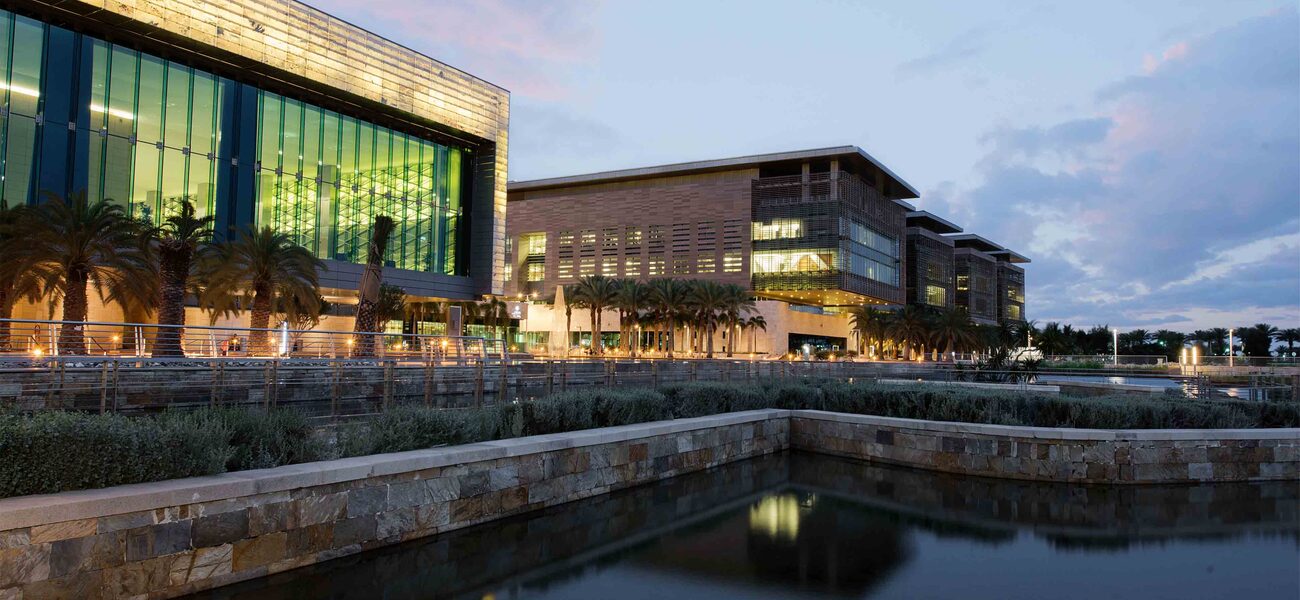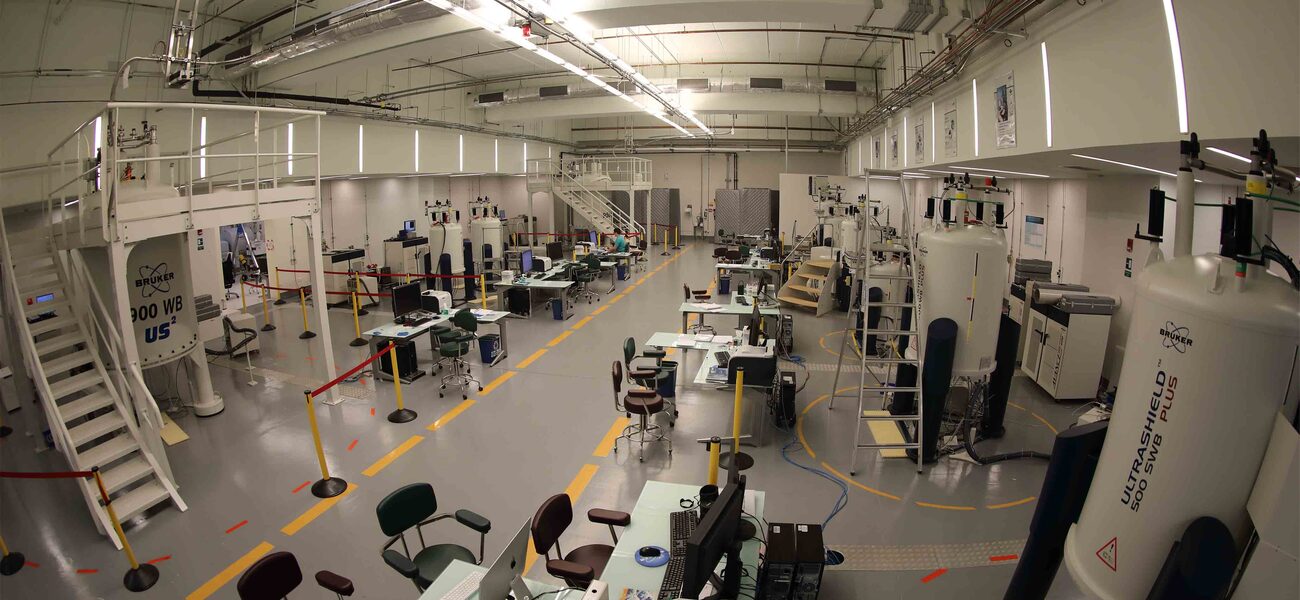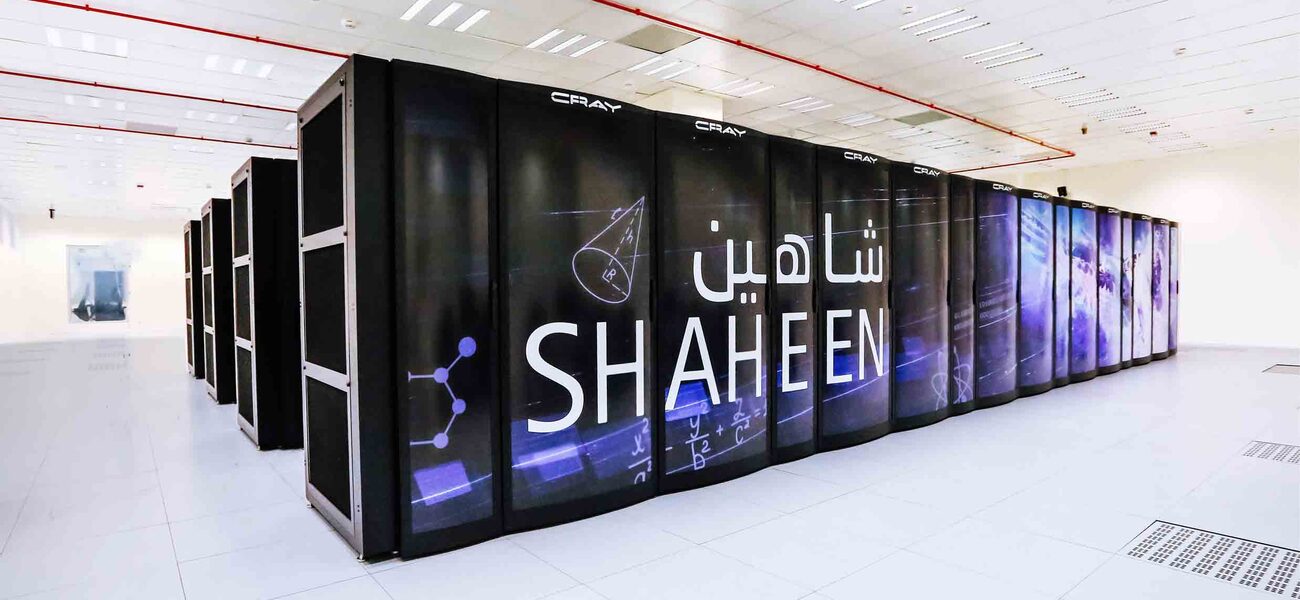The Core Labs at King Abdullah University of Science and Technology (KAUST) in Saudi Arabia are run as a centrally governed “one lab” facility. In addition to successfully providing state-of-the-art equipment, training, and services to students, researchers, faculty, staff, industry partners, and collaborators, the core labs extend their services to external users, such as government organizations, research institutes, and other universities. By centralizing the business operations of 10 specialized labs, the model fosters collaboration, rationalizes necessary square footage, improves access to equipment and services, and eliminates duplication of resources, thus enhancing overall efficiency and reducing expenditures.
“The one lab model refers to the centralization of business operations across the core lab facilities,” says Justin Mynar, associate vice president for research and executive director for the core labs. “Operations include finance and resource planning, asset management, user engagement and services, health and safety, marketing and communication, recruitment, and policy. This model allows greater visibility of individual lab operations and performances, enables the alignment of policies and procedures, permits the implementation of common key performance indicators, and ensures a single communications channel. Greater visibility and better alignment enhance user engagement, efficiency, transparency, assessment, and decision making.”
These fully equipped labs, which include two outdoor facilities, approximate a total area of almost 570,000 sf. All labs are strategically located on campus, housed in seven separate buildings. They provide the equipment necessary to support 10 scientific fields/research areas: analytical chemistry, animal resources, bioscience, coastal and marine resources, greenhouse, imaging and characterization, nanofabrication, supercomputing, visualization, and prototyping and fabrication. More than 1,200 internal users and 202 external users utilize the labs, which house over 500 instruments and employ over 150 staff, the majority of whom have advanced degrees in science and engineering.
The KAUST Vision
The core lab’s concept coincides with KAUST’s vision to be a destination university for scientific and technological education and research. The research centers and labs are designed to meet the needs of graduate students, enhancing their educational experience and promoting progressive, innovative research. They achieve these goals by fostering creative approaches to challenges, and offering an interdisciplinary, team-based environment supported by shared resources.
“The core labs allow our users access to cutting-edge technologies and to scientists who have been expertly trained on specific instruments,” says Mynar. “This enables a faster turnaround in achieving results, facilitating a steady, prompt progression of research trajectories. Shared research facilities also provide a platform for collaboration among faculty and researchers.”
Shared facilities also provide KAUST with the necessary support to sustain multi-disciplinary collaborations, to consolidate investments based on shared needs, to ensure operations by dedicated scientific personnel, to make efficient use of resources by eliminating duplication, to foster innovation in cutting-edge techniques and methods, and to attract talented faculty, students, and scientists.
KAUST began the transformation to the one lab model in 2014. This transformation demanded the restructuring of governance, staffing, user engagement policies, reporting methods, and operational and service practices. Stakeholders wanted a comprehensive, standardized model that would ensure best practices across all labs, requiring a single-board governance with shared objectives, common performance metrics, optimum management and utilization of resources, and the highest return on investment. Providing and sustaining cutting-edge labs also demands that staff members continually upgrade their capabilities by acquiring or developing new analytical techniques or methods.
Implementing the organizational changes meant addressing the needs of a diverse group of users, maintaining high productivity, and balancing services versus science.
“The restructuring of the labs has improved our working partnership with faculty in capital acquisition planning, ensuring both needs and productivity are met,” says Mynar. “We also encourage our staff to actively collaborate with internal and external users, supporting the research ambitions of KAUST and the Kingdom of Saudi Arabia.”
Balancing services and science in a university environment is important and can be challenging due to the different requirements and skillsets needed. The core labs provide four types of services: full service, where lab technicians and scientists undertake work as requested by a user; training, where staff train users on specified instruments; independent use, where the user conducts an experiment in a lab utilizing the equipment after passing the necessary training; and collaboration, where staff work with internal and external users focusing primarily on new method development.
Benefits of the One Lab Model
The core labs offer more than 800 services, train more than 700 people per year, and conduct over 5,000 transactions per month. Transactions are defined as the services conducted in the labs.
- The Analytical Chemistry Core Lab specializes in custom and routine chemical analysis.
- The Animal Resources Core Lab supports all mouse-based research. All animal research is conducted in compliance with the Guide for the Care and Use of Laboratory Animals (National Research Council. 2011), ensuring international standards in animal welfare and results reproducibility.
- The Bioscience Core Lab enables users to conduct genetic and genomic analyses, as well as protein identification, expression, and characterization.
- The Coastal & Marine Resources Core Lab specializes in marine operations, oceanographic instrumentation, and wet lab experimentation.
- The Greenhouse Core Lab supports all plant-based research conducted at KAUST.
- The Imaging & Characterization Core Lab supports users in their specialized spectroscopy and microscopy needs.
- The Nanofabrication Core Lab supports research into microelectronics, advanced nanostructured materials, nanotechnology, microfluidics, and the fabrication of biomedical, electronic, and optical devices.
- The Supercomputing Core Lab supports users in the advanced use of high performance computing hardware and software. The KAUST supercomputer was the seventh fastest in the world in 2015 and is now ranked as the 18th fastest.
- The Visualization Core Lab provides the latest methods to explore, analyze, and minimize the movement of the extreme amounts of data generated by instrumentation, such as the electron microscopes and the supercomputer.
- The Central Workshops Core Lab provides engineering design and fabrication of customized experimental tools and equipment.
“The model includes a one-door policy, which facilitates the access of services through our online lab and service management systems,” says Mynar. “Instead of contacting multiple labs separately for different service requests and following different procedures, this model allows users to reserve instruments and/or submit service requests to different core labs through centralized systems. The one-door policy enables the efficient transition of information and prompt research progression. It fosters open access to information about facilities available in other labs necessary to furthering or completing research projects.”
Strategic advantages include:
- Fully integrated laboratory management system, accessible through a single-entry point, facilitating comprehensive research support.
- Centralized financial overview and planning system that ensures resources and funds are optimally used and managed between labs.
- Standardized asset management procedures, ensuring greater control over equipment performance, the protection of asset values, and the application and maintenance of best practices prolonging the lifetime of assets.
- Vendor management strategy for the oversight and consolidation of vendors’ equipment and services, improving KAUST’s negotiation power in receiving the highest benefits for the research community. For example, the university partnered with Thermo Fisher Scientific to create a center of excellence in electron microscopy. The aim is to structure a relationship with a vendor to ensure receipt of best services and access to the latest technologies and expertise. Partnerships with two additional companies are in the works.
- Integrated reporting system that provides business performance analytics on demand to enable senior management to make judicious decisions and take well timed actions. Performance reports from all labs can be run from a centralized location, rather than gathering reports from each lab. The utilization of a centralized management system allows KAUST to establish lab performance indicators. These indicators present operational standardization and allow for the monitoring of certain criteria, ensuring the portfolio maintenance does not exceed 7 percent of total asset value, and that equipment downtime does not exceed 1.5 percent.
The centrally managed system helps KAUST maximize equipment availability, minimize the cost of maintenance, decrease safety incidents, and simplify the process by which users obtain the space and equipment they need. The combined result is the foundation for internal communication among lab staff, a fundamental factor in encouraging teamwork. Collaboration between the university’s labs and its industrial partners is resulting in scientific innovations, such as world-leading quantitative methods in dynamic nuclear polarization, solid-state nuclear magnetic resonance spectrometry, and the first trillion-cell reservoir simulation.
Intra-core lab projects are easier to complete than they would be in a traditional lab setting where obtaining assistance from multiple labs could be time-consuming and ineffective. For example, the researchers at KAUST could scan a sample in the Imaging and Characterization Lab using various tools, such as electron microscopes. A 3D structure of the sample could then be created in the Visualization Core Lab and sent to the Supercomputing Core Lab for flow simulation. All data is saved to a centralized file system accessible by multiple labs.
By Tracy Carbasho



